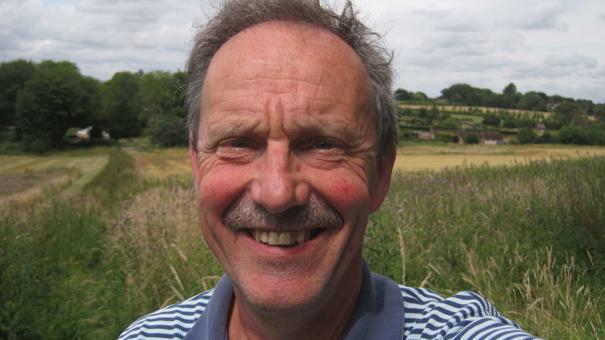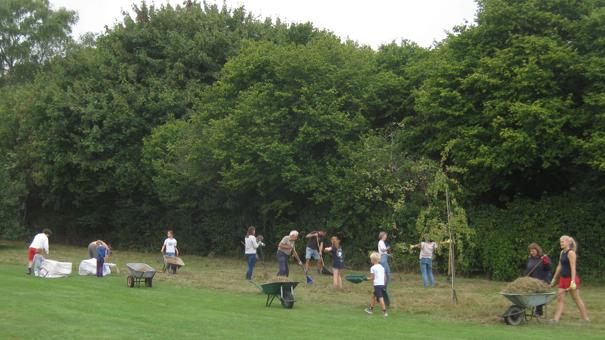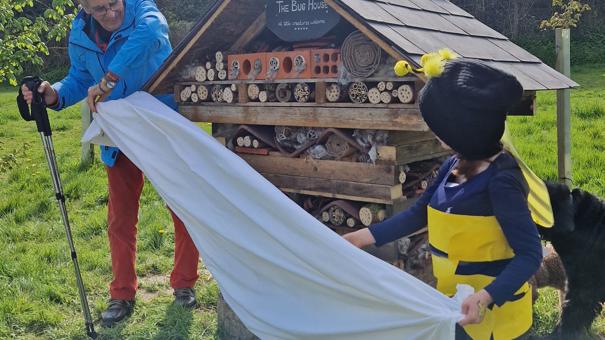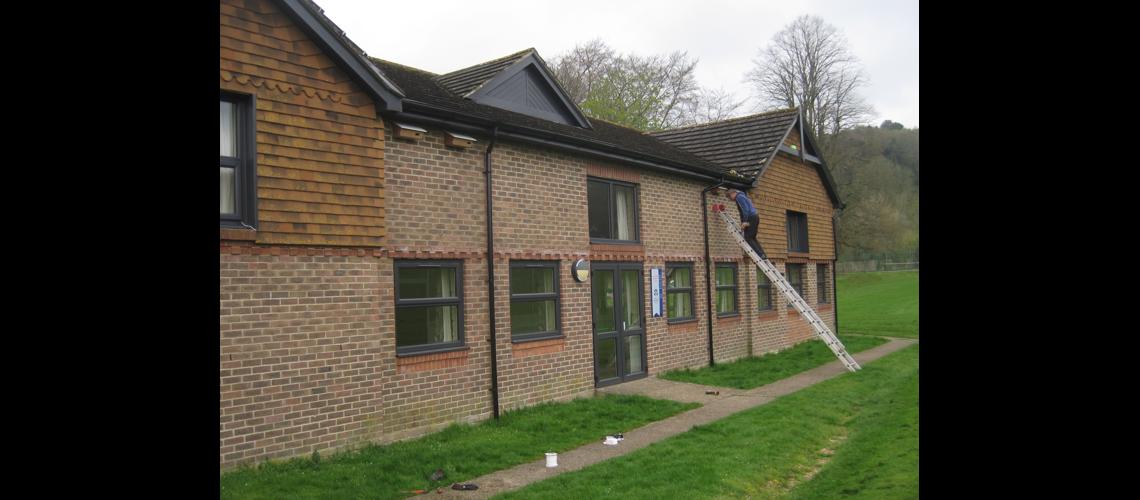A quiet revolution has happened in Buriton, thanks to a happy confluence of the Parish Council (PC) and some special expertise, in the shape of Doug Jones. Doug became chairman of Buriton Parish Council around five years ago during a term serving on the South Downs National Park Authority (SDNPA). With his background in environmental sciences and his experience at the Local Government Association as the Agenda 21 ‘lead’, Doug was perfectly poised to set Buriton on the right track to nature recovery.

First up, Doug brought villagers together and encouraged the formation of two groups of 7-8 people, one focused on climate and the other on nature. Later, after the hiatus that was Covid19, the groups joined to form Buriton Environmental Association (BEA), an incredibly forward-thinking organisation whose activities fill the pages of Buriton’s Parish magazine and populate the community website.
There had been history of parish involvement in the local environment, right from the Buriton Chalk Pits nature reserve being established by the PC in 2001, before the National Park was established. However, much of what has been achieved more recently in Buriton came about owing to the contacts Doug had made in his role on the SDNPA. He says that Steve Peach, of Hampshire County Council (HCC), got in touch when he was hoping to find pilots for a new initiative, Parish Pollinator Pledges. Buriton commenced their pilot in 2019 and was joined by other PCs in Selborne, Greatham and Binstead. The scheme encouraged the village to work together and raised awareness and so the PC decided to take forward further pollinator-friendly work.

Expertise from both HCC and Plantlife is helping these parishes consider changes to the management of road verges and the Bee Lines initiative from the SDNPA also helps to connect communities working on pollinators. Doug says, “In one of the early networking meetings, a Beeline between Binsted and Buriton was suggested. Many farmers, such as those in the Selborne area, are already showing how their land can create corridors for wildlife”.
Further SDNP initiatives include the Call for Nature Sites and Trees for the Downs, both of which have benefited Buriton Recreation Ground (The Rec), where a new copse of thirteen trees was added to the village’s conservation gains and an adjacent area owned by Network Rail along the London – Portsmouth line is being investigated. The Rec, in itself a focal point for the village, is in many ways a flagship site for BEA. Borders of up to a width of 10m around the perimeter on two sides of the Rec are managed according to established meadow management techniques of one mow per year and all the arisings (cuttings) are removed.
Inspired by Plantlife’s NoMowMay, the aim is to increase the diversity of plants in the sward. This is a big job, because by August/September, the grass is long and wiry, making it difficult to cut. Special machinery is required before the arduous task of raking up the arisings. The village comes together in a grand “Hay Day” each September to help, and whole families are involved, bringing their rakes and barrows.

Further conservation effort at The Rec includes dozens of new hedgerow plants, a change to routine hedge-cutting, which occurs once every two years on the Rec-facing side of the hedge, a new Bug Hotel made and designed by villagers Ken Cox and Dave Grant, four swift boxes installed on the Village Hall and a Moth Trap during the summer months.
Over 40 swift boxes have also been installed on homes in the village. “It is really important to try and involve everyone. We have a rota for moth monitoring, and we try to run almost monthly awareness raising activities such as bat and swift walks and fungi forays. Learning about and observing nature appeals to all ages and everyone can become involved”, says Doug.
Doug has helped establish a new environmental awareness fixture in Buriton’s calendar – their B’Earth Day, now in its third year, which brings together a range of environmental groups (including PeCAN) every April, on Earth Day. This celebration of nature and 'call to action' involves the whole village, including St Mary's Church, Buriton and Ditcham Park Schools and local farms. The event has prompted new activities, such as a garden trail, where villagers learn about welcoming nature into their gardens. They also make commitments, or 'pledges' on a village map, which aims to join up wildlife friendly areas, creating corridors.
As BEA goes from strength to strength, new projects are added for 2024, including a seed swap, a ‘Liking Lichens’ event and a talk about how farming is helping to protect resources and enhance the natural environment and wildlife.
“Buriton has always been a positive community”, says Doug, “and we’re fortunate that so many people here are now taking such an interest in nature and its connections with climate change.”
Written by PeCAN trustee Melanie Oxley

